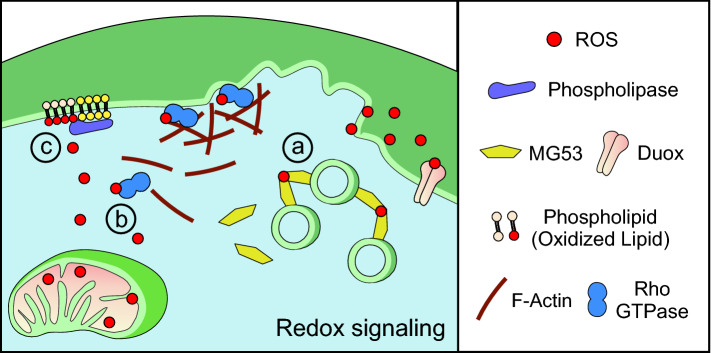Fig. 4.
Redox signaling facilitates plasma membrane repair. Reactive oxygen species (ROS) present at the site of injury may be produced by mitochondria or the NADPH oxidase Duox. Redox signaling results in protein and lipid modification that initiates repair pathways in parallel with calcium-dependent mechanisms. (a) Vesicle aggregation: oxidation of the TRIM-family protein MG53 causes its oligomerization. This promotes vesicle aggregation near the site of injury and may promote repair by participating in clotting or membrane fusion. (b) Cytoskeletal rearrangement: redox regulation of Rho-family GTPases facilitates cytoskeletal rearrangement. Oxidation increases the activity of Rho GTPase, which mediates F-actin assembly at the site of injury. (c) Lipid modification: redox signaling provides additional diversity in the spatial and temporal patterning of lipids. In conjunction with calcium-dependent patterning, phospholipases interact with oxidized lipids to provide signaling platforms to activate downstream repair pathways

